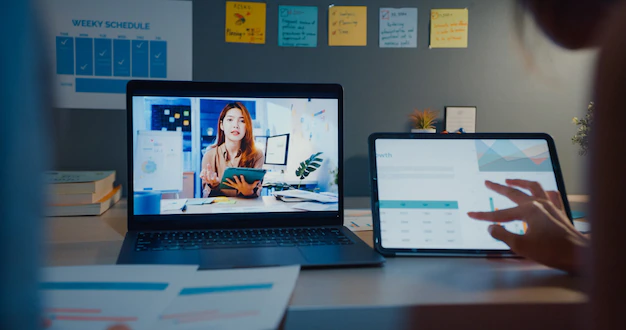A Comprehensive Guide on Blended Model

A blended model of learning is an approach that combines traditional classroom instruction with online learning. It is also known as a hybrid learning model, which involves a combination of face-to-face and online instruction. This approach allows students to learn at their own pace and in a flexible way, while still receiving the benefits of in-person instruction and interaction with their peers and instructors.
See: 5 Virtual Training Trends That Will Improve Your Blended Learning Program
Uses of Blended Model
- To provide students with more flexibility and control over their learning experience
- To increase student engagement and motivation
- To provide students with access to a wider range of resources and learning materials
- To personalize instruction to meet the needs of individual students
- To support blended learning programs and initiatives
Advantages of Blended Model
- Flexibility: Blended learning models allow students to learn at their own pace and in a flexible way. This can be especially beneficial for students who have busy schedules or who need to balance work and school.
- Personalization: Blended models can be tailored to meet the needs of individual students. This can include providing extra support for students who need it or providing more challenging material for students who are ready for it.
- Increased Engagement: Blended model can increase student engagement by providing a variety of different learning experiences and opportunities for interaction with peers and instructors.
- Access to Resources: Blended model provide students with access to a wider range of resources and learning materials. This can include online resources such as videos, simulations, and interactive activities, as well as traditional resources such as textbooks and lectures.
- Cost-effective: Blended model can be a cost-effective way to provide high-quality instruction. This is because they often involve a combination of online and in-person instruction, which can be less expensive than traditional classroom-based instruction.
Disadvantages of Blended Model
- Access to Technology: Blended model require access to technology, which can be a barrier for some students. This can include access to a computer and internet, as well as the skills needed to use technology effectively.
- Limited Interaction: While blended model can increase student engagement, they can also limit interaction with peers and instructors. This can be especially true for students who are learning primarily online.
- Limited Feedback: It can also limit the feedback students receive from instructors. This can be especially true for students who are learning primarily online.
- Limited Access to Extra Support: It can limit access to extra support for students who need it. This can be especially true for students who are learning primarily online.
- High Demand for Self-motivation: Blended models require students to be highly self-motivated, as they must be responsible for managing their own learning.
In conclusion, blended model of learning can be an effective way to provide students with a more flexible, personalized, and engaging learning experience. However, it also comes with certain disadvantages such as limited interaction, limited feedback, limited access to extra support and high demand for self-motivation. Thus, it is important to consider the advantages and disadvantages of blended models when implementing them in educational institutions. It is also important to ensure that students have access to the technology and support they need to succeed in a blended learning environment.





